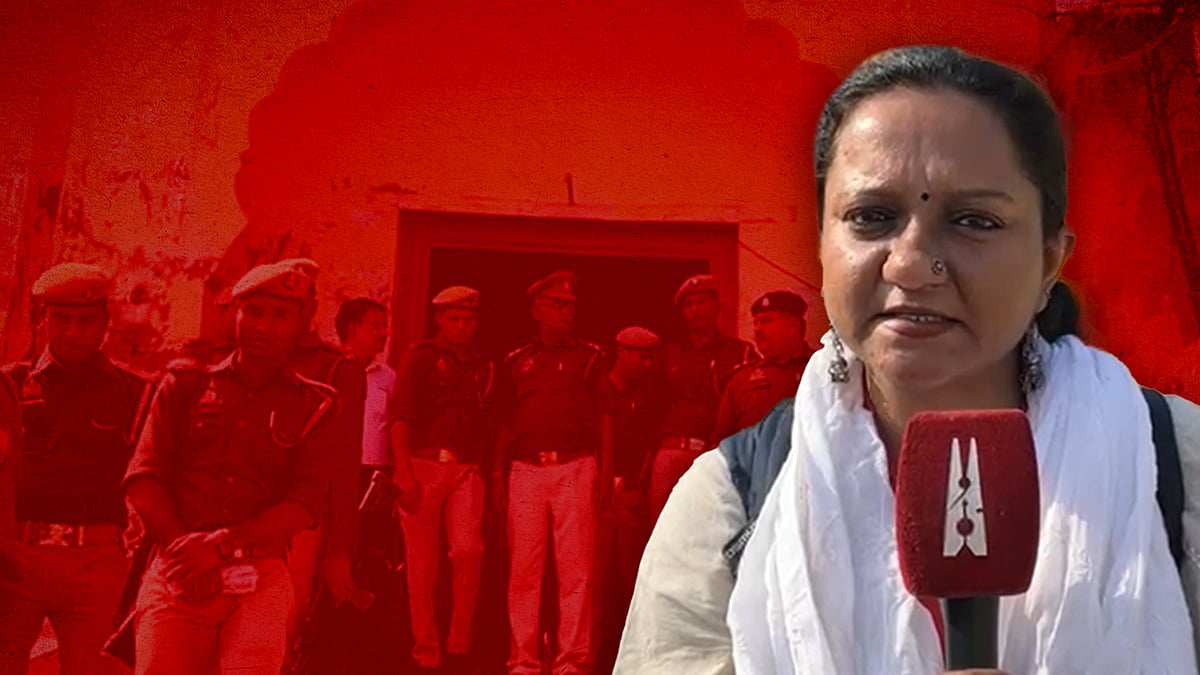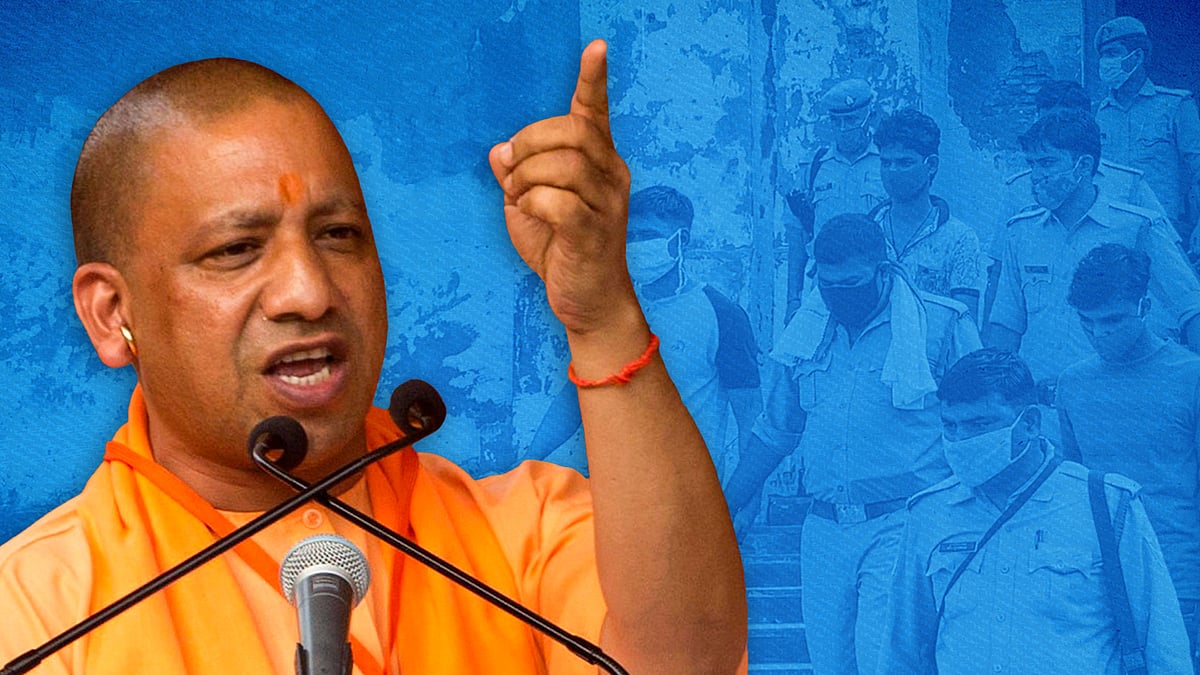‘If reality, she would have told reporters’: Why Hathras verdict set aside victim’s dying declaration
The 167-page judgement relied on prosecution witnesses to explain why the accused were acquitted of rape.
“If in reality, the incident was caused by those four persons and the victim had been raped, then she would have told the reporters about the accused as well as the rape.”
This is what a special judge at the SC/ST court in Hathras said while acquitting three people and convicting one in the 2020 Hathras rape and death of a Dalit woman.
Sandeep Sisodia was convicted of culpable homicide not amounting to murder and was sentenced to life imprisonment. The court also ordered him to pay Rs 40,000 to the woman’s mother. Sandeep and the other three accused – Ravi, Ramu and Luvkush – were all acquitted of rape.
The court’s 167-page judgement relied on medical records and statements from prosecution witnesses, all of which were part of the chargesheet filed by the CBI in December 2020. The CBI had said the 19-year-old victim was raped by four men after she turned down Sandeep’s advances. This “change in their relationship” purportedly “aggravated his feelings” and “frustrated him”.
Importantly, the woman gave at least two statements to the police before she died and had named the four accused. They were also named in the CBI’s chargesheet.
So, why didn’t the woman’s dying declaration hold more value? Newslaundry scrutinised the judgement to find out.
Videos from journalists
Among the prosecution witnesses quoted in the judgement are two local journalists from Hathras who had made videos of the woman after the rape on September 14, 2020.
Newslaundry had reported on how the woman’s family found her, naked and bleeding, in the field near her home on September 14 that year. Her family immediately took her to Chandpa police station where she “lay groaning in pain on a stone platform in the sun”.
Govind Kumar Sharma, a reporter with a news channel called Amar Tanav, had shot four videos of the woman at the police station that day. Sharma told the CBI: “In my video, when I asked the victim’s mother as to what happened, she had responded by saying ‘bhayo kuch nahi’.” Nothing much happened.
He alleged the woman’s mother also said “main toh maara-maar chipti baay” – I will beat him (referring to Sandeep). Sharma also said the victim had “named only one accused, Sandeep” in the videos.
After filing an initial complaint at Chandpa police station, the woman’s family took her to the Bagla Joint District Hospital in Hathras. Here, according to the CBI chargesheet, Hindi Khabar reporter Ravi Kumar shot three videos based on conversations with the woman and her mother.
Kumar said the woman “was conscious and had been responding adequately when questions were being asked. In the video, the victim didn’t level allegations of rape or gangrape”.
He continued, “I had recorded another video of the victim’s mother on the same day in which she spoke about maar-peet [physical violence] owing to 15-year-old enmity.”
Based on these statements from Sharma and Kumar, the district court concluded that if the “incident was caused by those four persons”, the victim would have”told the reporters about the accused as well as the rape”.
Statements from witnesses
The woman made two crucial statements before she died.
The first, on September 19, 2020, was recorded by a constable named Rashmi at JN Medical College in Aligarh. The woman said, “Sandeep tried to strangle me.” She also mentioned the word “ched-khaani” (colloquial reference to molestation) and “zabardasti” (colloquial reference to rape) while mentioning that “there were 4-5 other persons”.
Rashmi, in her statement to the CBI, said, “When I asked the victim about the incident, she told me that before being strangled, there had been ched-khani” – a colloquial reference to molestation.
Newslaundry had reported on how the Aligarh hospital had delayed her medico-legal examination allegedly because it required the relevant sections to first be added to the FIR. This led to a loss of crucial evidence. It was eight days after the incident and five days after being told about it that the hospital finally conducted the rape examination.
Three days later on September 22, the woman said in a separate statement, “Sandeep, Ramu, Luvkush and Ravi of my village committed rape upon me, Sandeep then strangulated me with dupatta.”
Statements by two other prosecution witnesses form the basis as to why the woman’s dying declaration was set aside by the district court. Both witnesses had been present at the Aligarh hospital on September 22, 2020.
The first witness, Sarla Devi, was head constable at Chandpa police station. She told the CBI the woman “spoke about Sandeep, Ravi, Ramu and Luvkush grabbing her and raping her”.
“When I asked the victim why didn’t she mention rape in her earlier statement and took the name of only one accused, the victim said that she couldn’t retain consciousness so couldn’t mention it all earlier,” Sarla said.
But Manish Kumar, the nayab tehsildar of Kol Tehsil in Aligarh, told the CBI the “victim didn’t mention rape” before him in her dying declaration on September 22. He also said “it is clear that the victim’s family members were present inside the hospital ward before her dying declaration had been recorded”.
On the basis of Sarla and Manish’s statements, the court observed that “since the victim had named only Sandeep in her statement recorded on September 19, five days after the incident, and named the other accused later in her statement recorded on September 22 before Sarla Devi and Manish Kumar, therefore, the victim’s version wherein she has named other accused apart from Sandeep as well as the incident of rape cannot be considered truthful”.
Medical evidence
According to the Hathras judgement, “any medical examination of the victim has not been able to establish rape”.
It cites a report submitted in December 2020 by a multi-institutional medical board, constituted by the forensic department at AIIMS, after the CBI took over the case.
“The MIMB team has not been able to prove the victim was raped,” the judgement said.
The report had said the “possibility of sexual assault cannot be ruled out”. “In this since, since there was a delay in reporting or documentation or forensic examination for sexual assault, these factors could be responsible for the absence of significantly visible signs of genital injury.”
Additionally, the court said the Hathras case “had acquired political form” and suggested that the victim had been “tutored”.
“...several persons were coming to meet the victim’s family who, in turn, were directly in touch with her,” the judgement said. “Therefore, the possibility that the victim took other names in addition to that of Sandeep, after she had been tutored by her family and others, can’t be ignored.”
The judgement also said, “If a statement is true and has been given out of one’s own volition then it doesn’t need to be corroborated. It has to be kept in mind that such a statement has been recorded soon after the incident and there has been no scope of tutoring.”
The four accused had told the police they were “trapped in the case owing to political and media pressure”. Sandeep specifically claimed the victim’s family had “links” to BJP MP Rajvir Singh Diler and his daughter Manju, perhaps because Manju had written to the Hathras DGP about adding gangrape charges to the FIR.
The victim’s brother addressed these “links” in his statement to the CBI.
“If Manju Diler, in any of her written representations, has attached my complaint while forwarding the same to police representatives, then I’m not aware of it,” he said. “I’m not aware if Manju Diler is a distant relative from our aunt’s side.”
 Court drops rape charges in Hathras case. Here’s what lawyers think
Court drops rape charges in Hathras case. Here’s what lawyers think Yogi Adityanath is backtracking on his promises to Hathras rape victim’s family
Yogi Adityanath is backtracking on his promises to Hathras rape victim’s familyNL Digest
A weekly guide to the best of our stories from our editors and reporters. Note: Skip if you're a subscriber. All subscribers get a weekly, subscriber-only newsletter by default.
